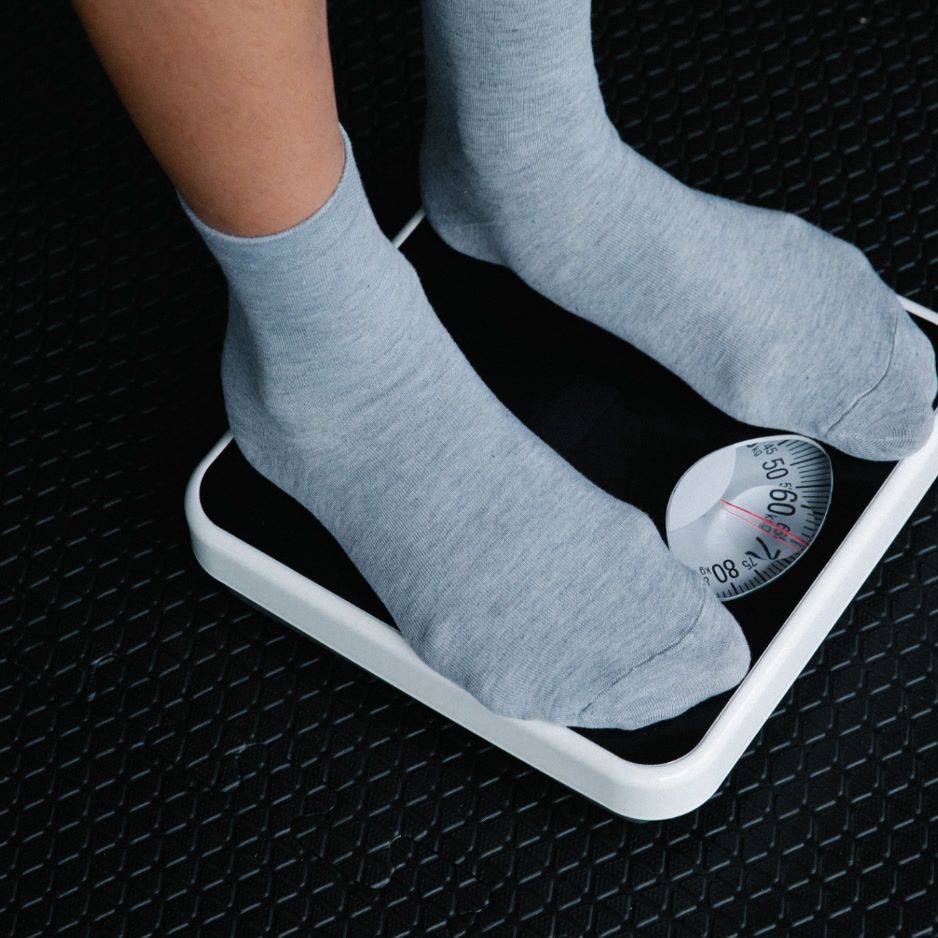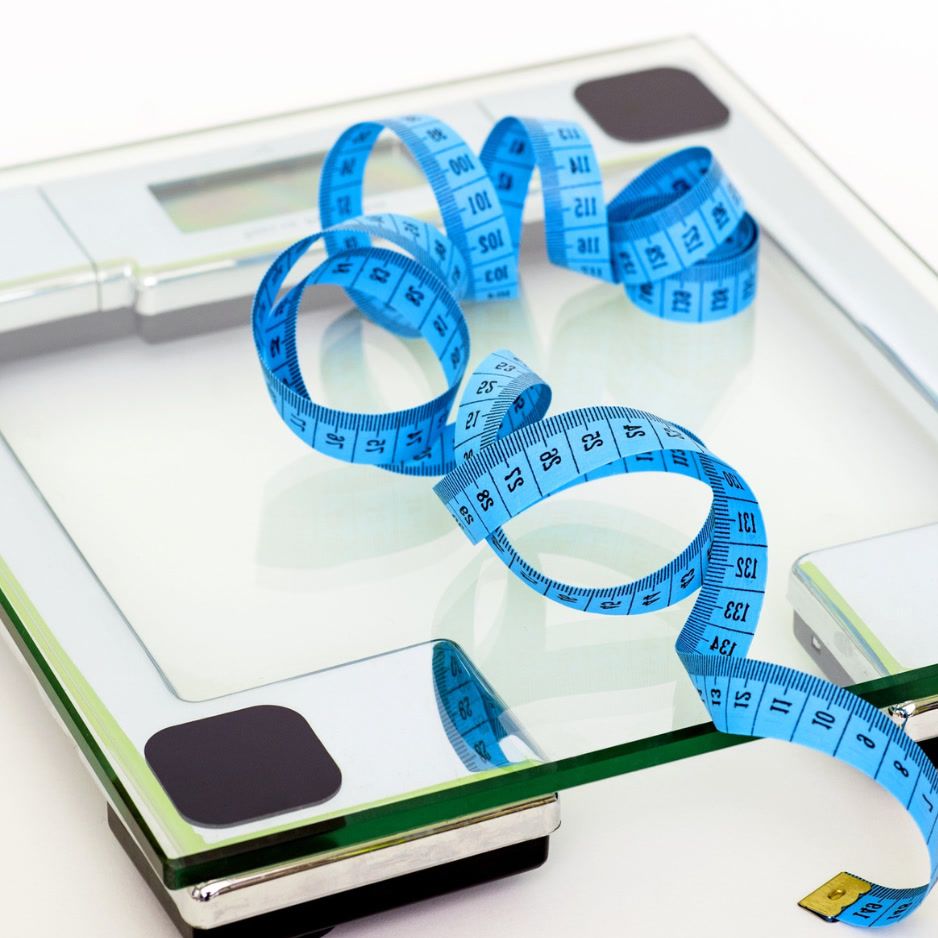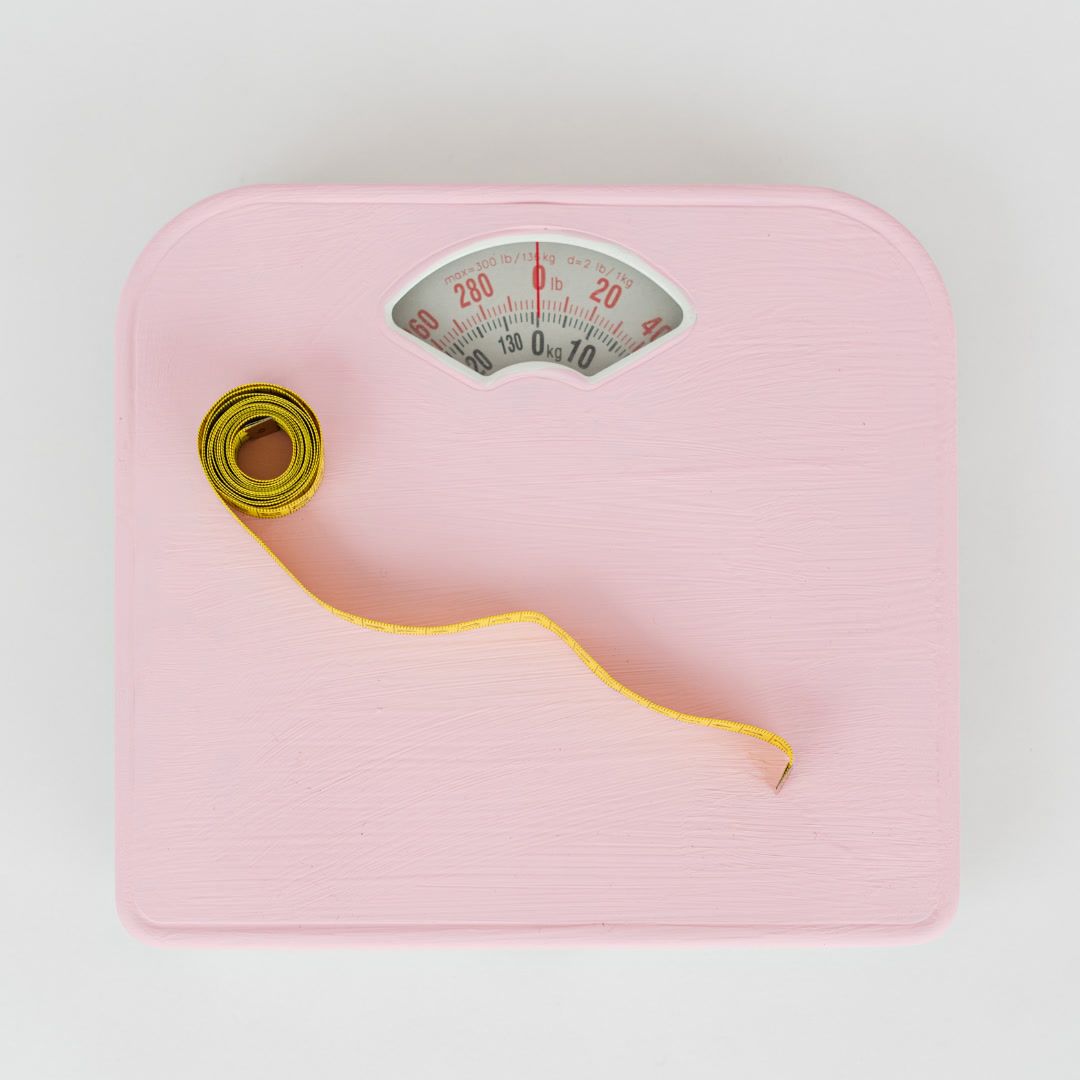10 Essential Exercises to Improve Posture and Relieve Pain
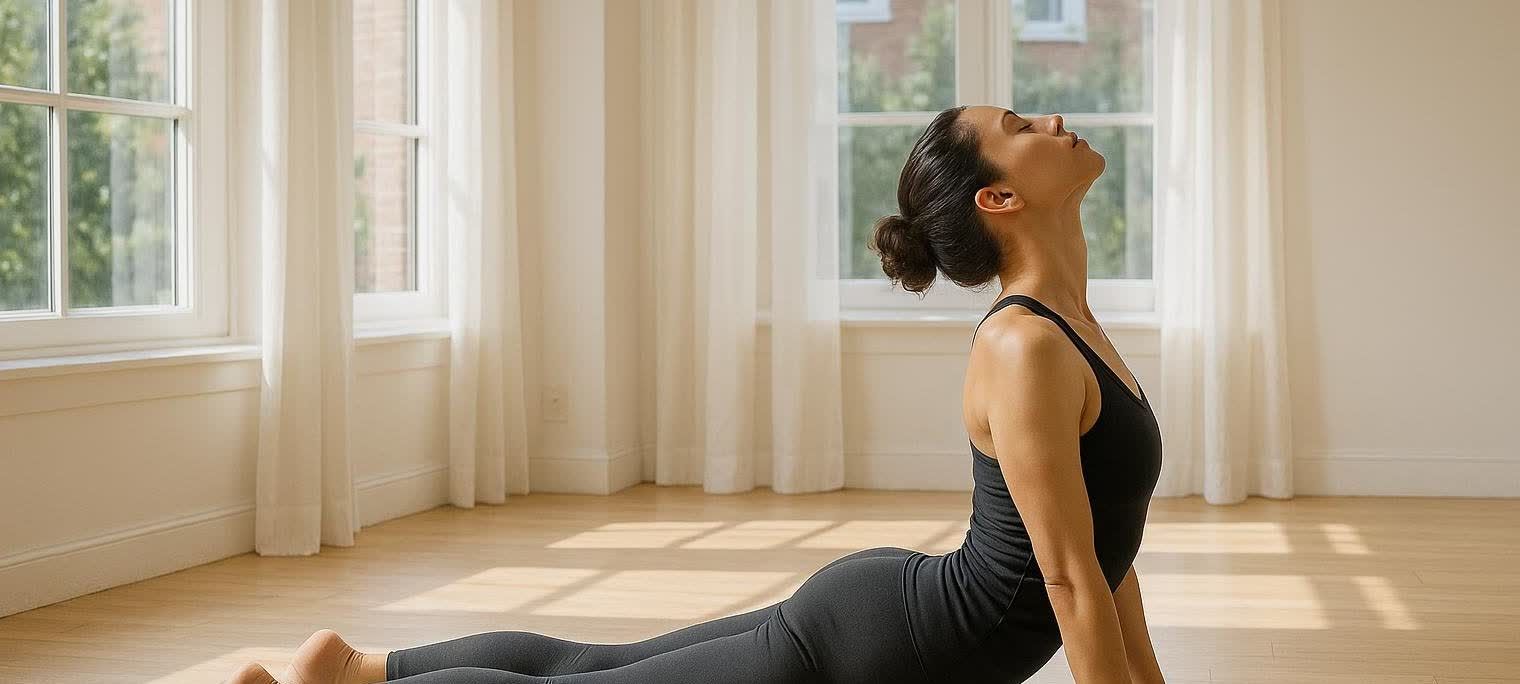
10 Essential Posture Exercises for Pain Relief
That nagging ache in your neck after a long day at the desk? The dull throb in your lower back that just won’t quit? According to physical therapists at the Cleveland Clinic, years of hunching over keyboards, staring down at phones, and slouching on the couch can create muscle imbalances that set off a cascade of discomfort.
But here’s the good news: poor posture isn’t a life sentence. With a targeted approach that combines stretching tight muscles and strengthening weak ones, you can realign your body, reduce pain, and stand taller. According to experts at Healthline, developing good posture involves focusing on exercises that build strength and flexibility. It’s not about achieving a rigid, unnatural military stance; it’s about restoring your body’s natural, efficient alignment.
Understanding your body's specific patterns is key. Your posture directly reflects your musculoskeletal health, which relies on a balanced network of lean muscle supporting your frame. A DEXA scan can reveal asymmetries in muscle mass, providing a roadmap for where to focus your efforts for a more balanced, pain-free posture.
What Causes Poor Posture?
For most of us, poor posture boils down to a predictable pattern of muscle imbalances, often caused by prolonged sitting. As physical therapists at the Cleveland Clinic note, this creates a tug-of-war between the front and back of your body.
- Tight Muscles: The muscles on the front of your body, like your chest and hip flexors, become short and tight from being in a constant state of flexion (i.e., hunched).
- Weak Muscles: Meanwhile, the muscles on the back of your body, like your upper back, core, and glutes, become lengthened and weak from disuse.
This combination pulls your spine out of its happy, neutral alignment, leading to the classic “tech neck,” rounded shoulders, and anterior pelvic tilt that cause so much grief. The secret to fixing it is to reverse the pattern: stretch the tight muscles and strengthen the weak ones.
The 10 Best Exercises to Improve Your Posture
Here are 10 foundational exercises—a mix of stretches and strengthening moves—to counteract common postural problems.
Stretching Exercises (To Loosen Tight Muscles)
1. Doorway Chest Stretch
This stretch directly counters the “hunch” by opening up tight pectoral muscles.
- How to do it:
- Stand in a doorway and place your forearms on the frame, with your elbows bent at a 90-degree angle.
- Step forward with one foot until you feel a gentle stretch across your chest.
- Hold for 20–30 seconds, breathing deeply.
- Repeat 2–3 times.
2. Cat-Cow Pose
A classic yoga pose that improves spinal mobility and relieves tension in the back and neck.
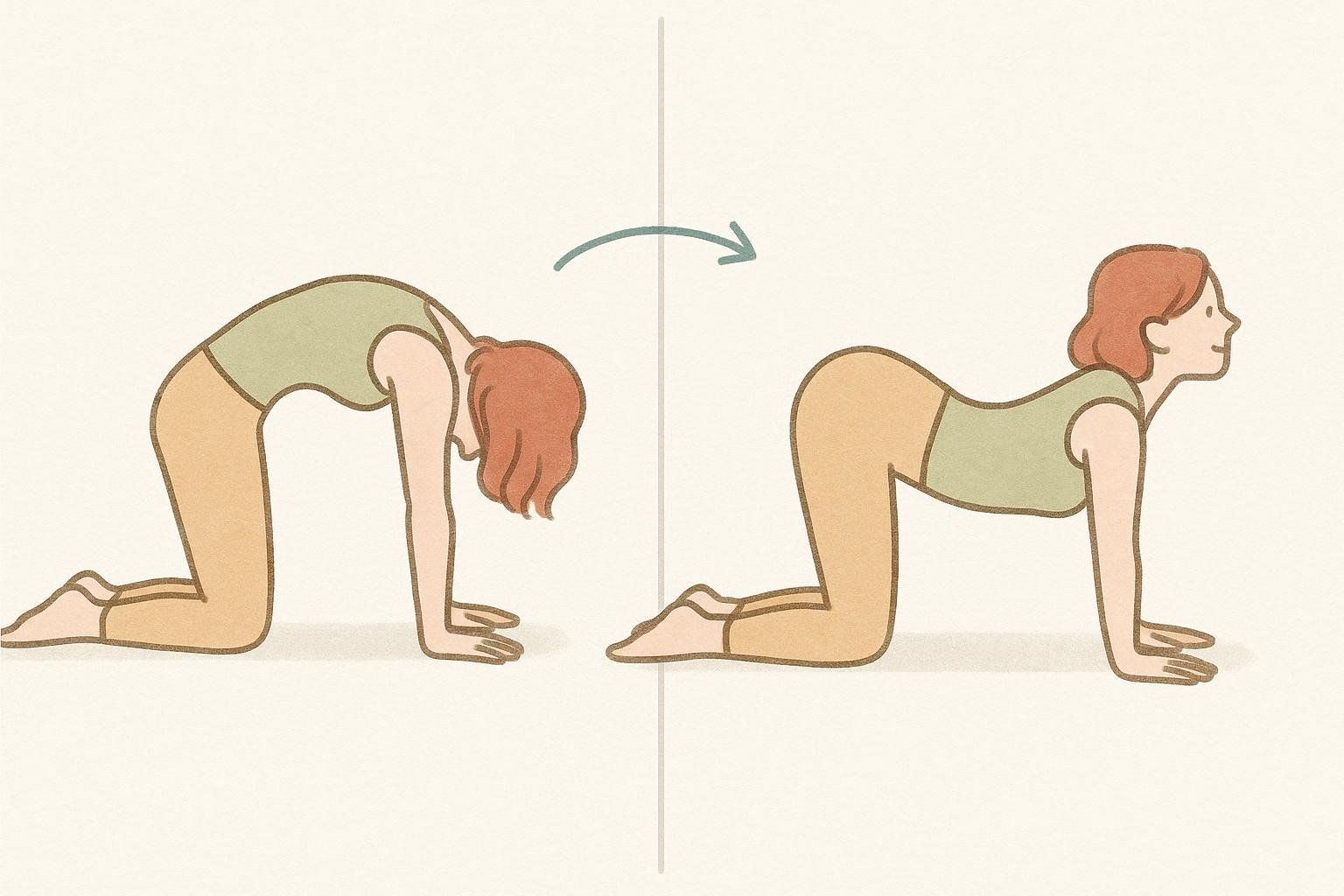
- How to do it:
- Start on your hands and knees, with wrists under shoulders and knees under hips.
- Cow: Inhale as you drop your belly toward the mat, lift your chin and chest, and look up.
- Cat: Exhale as you round your spine toward the ceiling, tucking your chin to your chest.
- Continue flowing between Cat and Cow for 8–10 slow, controlled reps.
3. Child’s Pose
This resting pose gently lengthens the entire back, from your neck to your lower spine.
- How to do it:
- From a hands-and-knees position, sit back on your heels.
- Hinge at your hips and fold forward, resting your forehead on the floor.
- Extend your arms in front of you or rest them alongside your body.
- Hold for 30–60 seconds, focusing on deep breaths that expand your back.
4. Kneeling Hip Flexor Stretch
Crucial for anyone who sits for long periods, this stretch opens up the front of the hips.
- How to do it:
- Kneel on your right knee, with your left foot flat on the floor in front of you (a lunge position).
- Tuck your pelvis slightly and gently push your hips forward until you feel a stretch in the front of your right hip.
- For a deeper stretch, reach your right arm overhead.
- Hold for 30 seconds, then switch sides.
5. Chin Tucks
This subtle move is a highly effective exercise for correcting forward head posture (“tech neck”).
- How to do it:
- Sit or stand tall, looking straight ahead.
- Gently guide your chin and head straight back, as if you’re making a double chin. You should feel a stretch at the back of your neck.
- Hold for 5 seconds and release.
- Perform 10 repetitions.
Strengthening Exercises (To Support Good Alignment)
6. Wall Angels
This exercise activates the often-neglected muscles of the upper back that pull your shoulders into alignment.
- How to do it:
- Stand with your back, head, shoulders, and glutes pressed against a wall.
- Raise your arms to a “goalpost” position, keeping your elbows and wrists pressed flat against the wall throughout the movement.
- Slowly slide your arms upward until your hands approach overhead.
- Pause, then slide back down to the starting position.
- Perform 10–12 reps.
7. Glute Bridges
Weak glutes contribute to lower-back pain and poor pelvic alignment. Bridges wake them up.
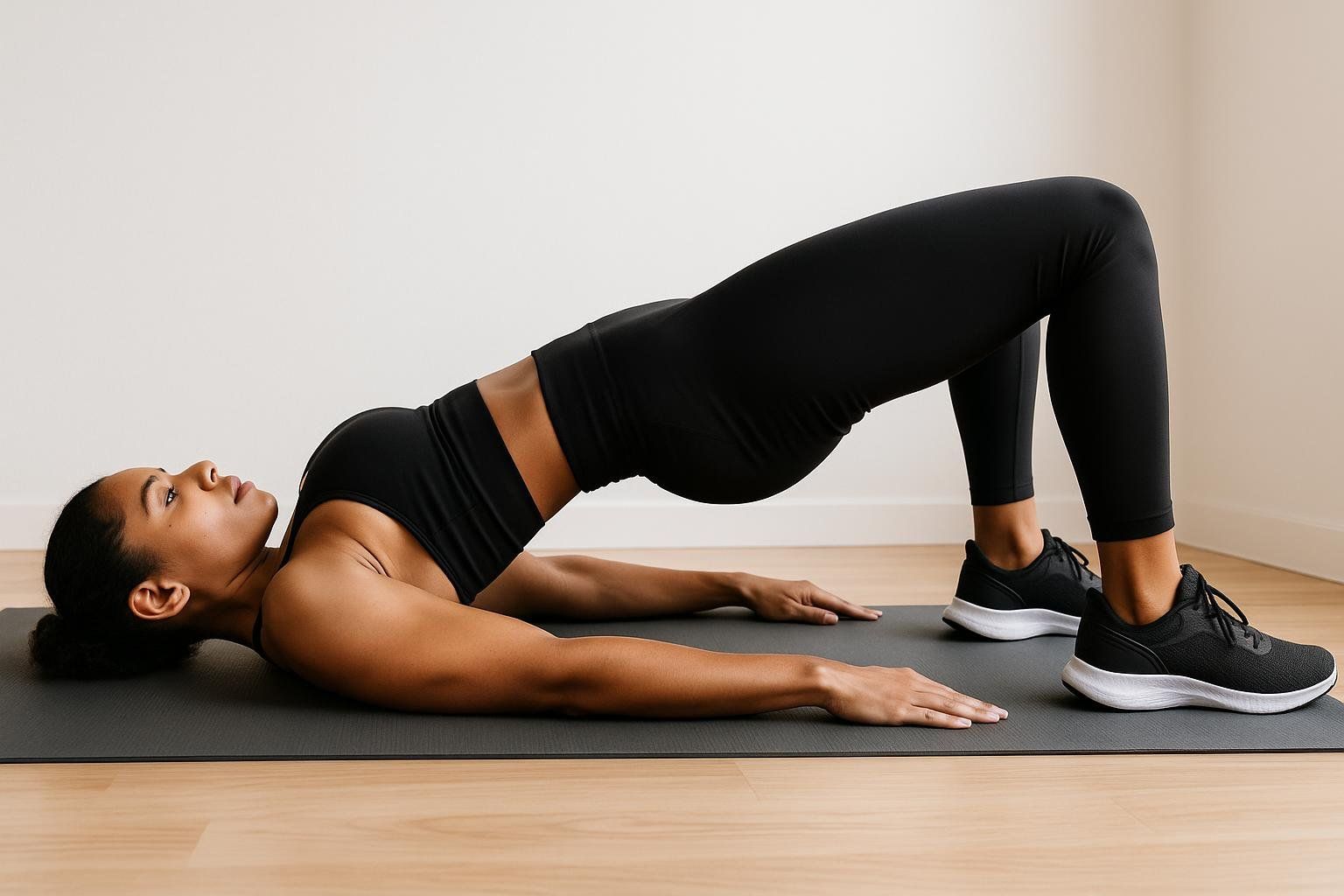
- How to do it:
- Lie on your back with knees bent, feet flat on the floor hip-width apart, and arms by your sides.
- Press through your heels and lift your hips until your body forms a straight line from shoulders to knees.
- Squeeze your glutes at the top.
- Lower with control.
- Perform 12–15 reps.
8. Plank
The plank builds the core stability needed to support your spine.
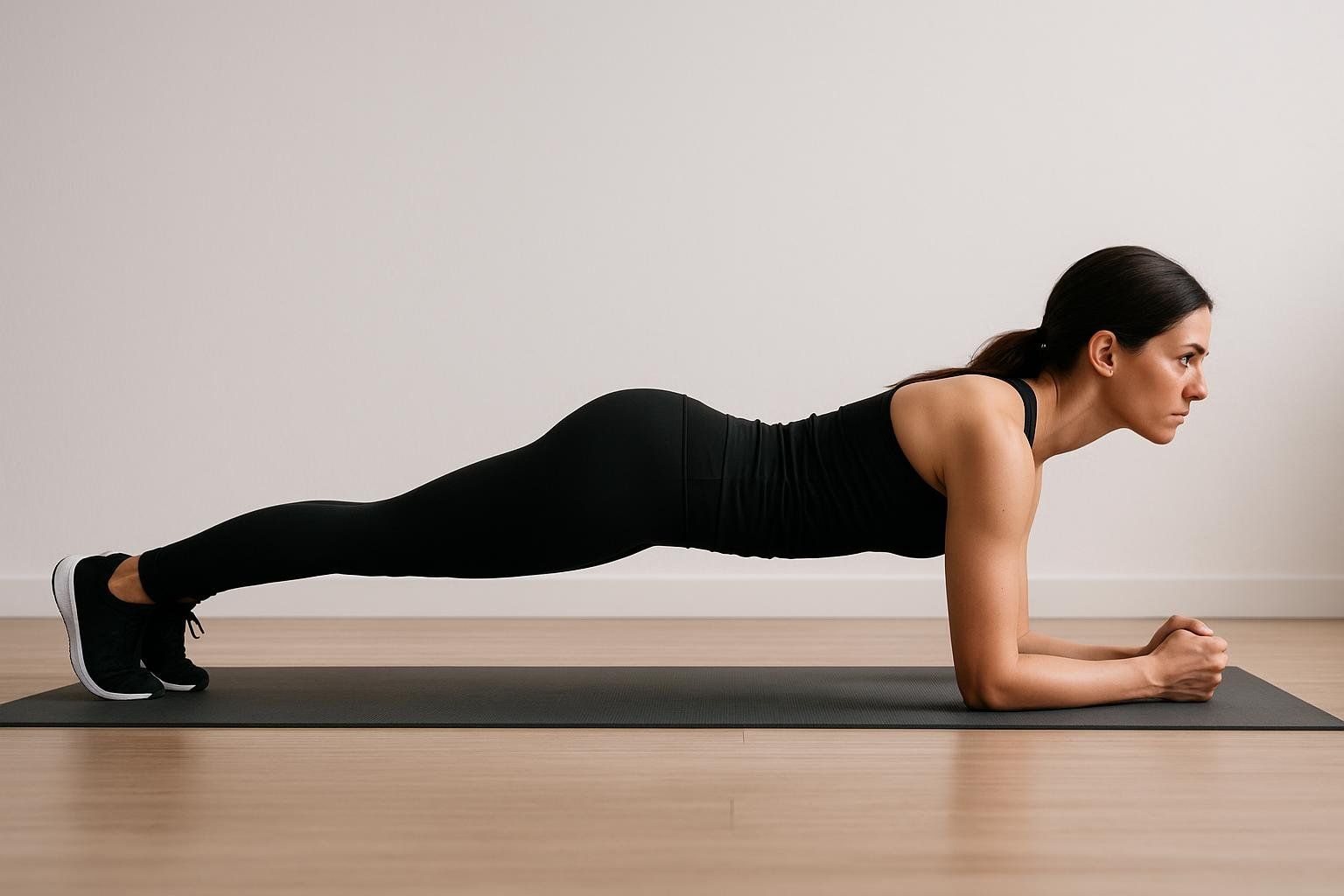
- How to do it:
- Place your forearms (or hands) on the floor, shoulder-width apart.
- Extend your legs back to form a straight line from head to heels.
- Engage your core and glutes to prevent hips from sagging.
- Hold for 30–60 seconds. For more on core training, see our complete guide to core strength.
9. Bird-Dog
This move challenges balance while strengthening your core and back extensors.
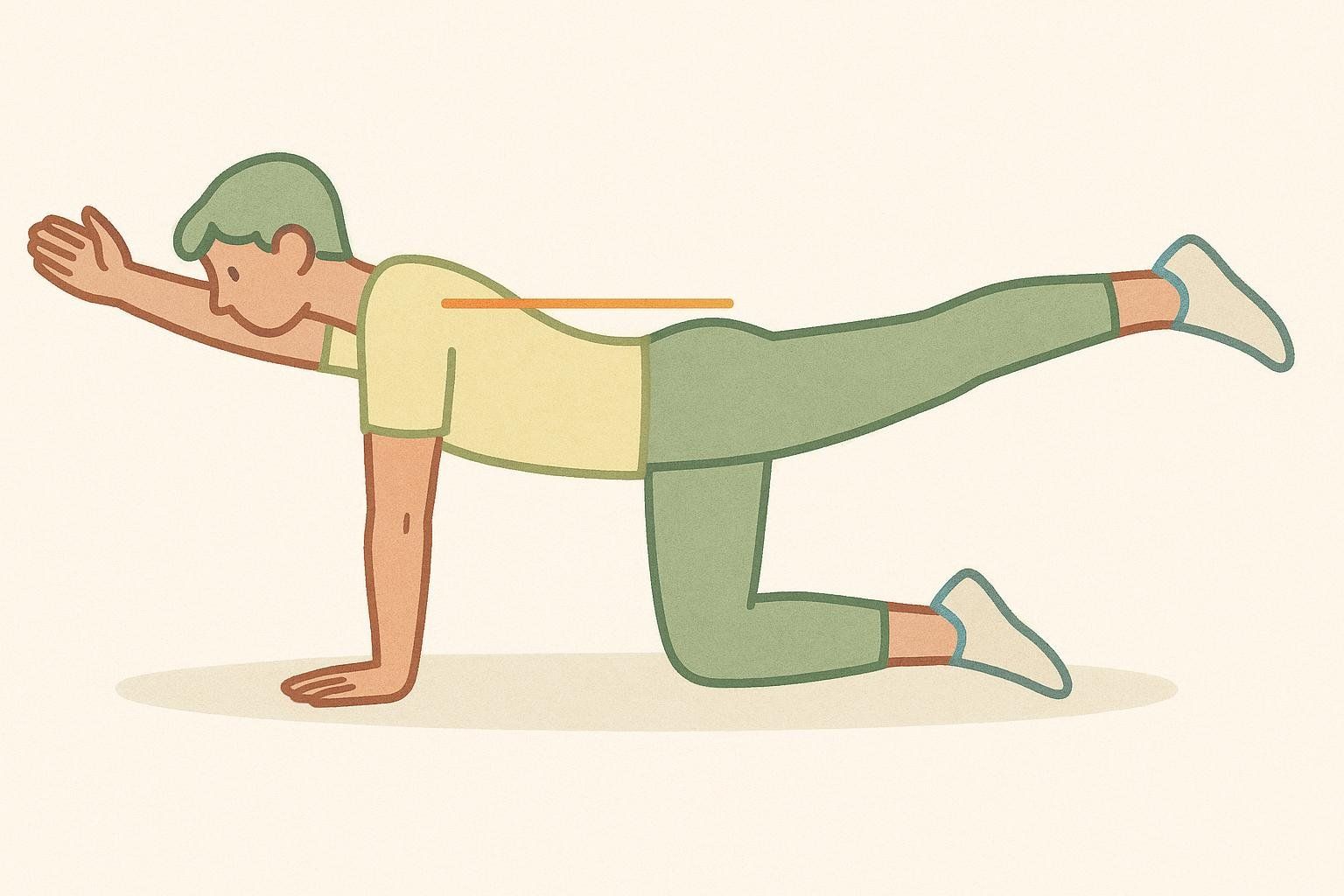
- How to do it:
- Start on hands and knees in a tabletop position.
- Engage your core to keep your back flat.
- Simultaneously extend your right arm forward and left leg backward.
- Hold briefly, then return with control.
- Alternate sides for 10–12 reps per side.
10. Banded Rows
Rows build the mid-back strength needed to maintain an upright posture.
- How to do it:
- Sit on the floor with your legs extended and loop a resistance band around the arches of your feet.
- Holding the band with both hands, sit tall.
- Pull the band toward your torso, squeezing your shoulder blades together.
- Release with control.
- Perform 12–15 reps.
Putting It Into Practice: Sample Daily Routines
Consistency beats intensity. Choose the routine that fits your lifestyle.
Desk Warrior (5 Minutes)
- Doorway Chest Stretch – 30 seconds
- Chin Tucks – 10 reps
- Wall Angels – 10 reps
Fitness Enthusiast Warm-up (10 Minutes)
- Cat-Cow – 10 reps
- Glute Bridges – 15 reps
- Bird-Dog – 10 reps per side
- Banded Rows – 15 reps
Seniors (Gentle Mobility)
- Seated Chin Tucks – 10 reps
- Cat-Cow – 8 reps
- Glute Bridges – 10 reps (focus on form, not height)
- Explore more drills in our guide to mobility exercises
How Body Composition Data Enhances Your Posture Exercises Plan
Good posture isn’t just about “sitting up straight.” It relies on a strong, balanced musculoskeletal system. Your body composition—the ratio of fat, muscle, and bone—is its foundation.
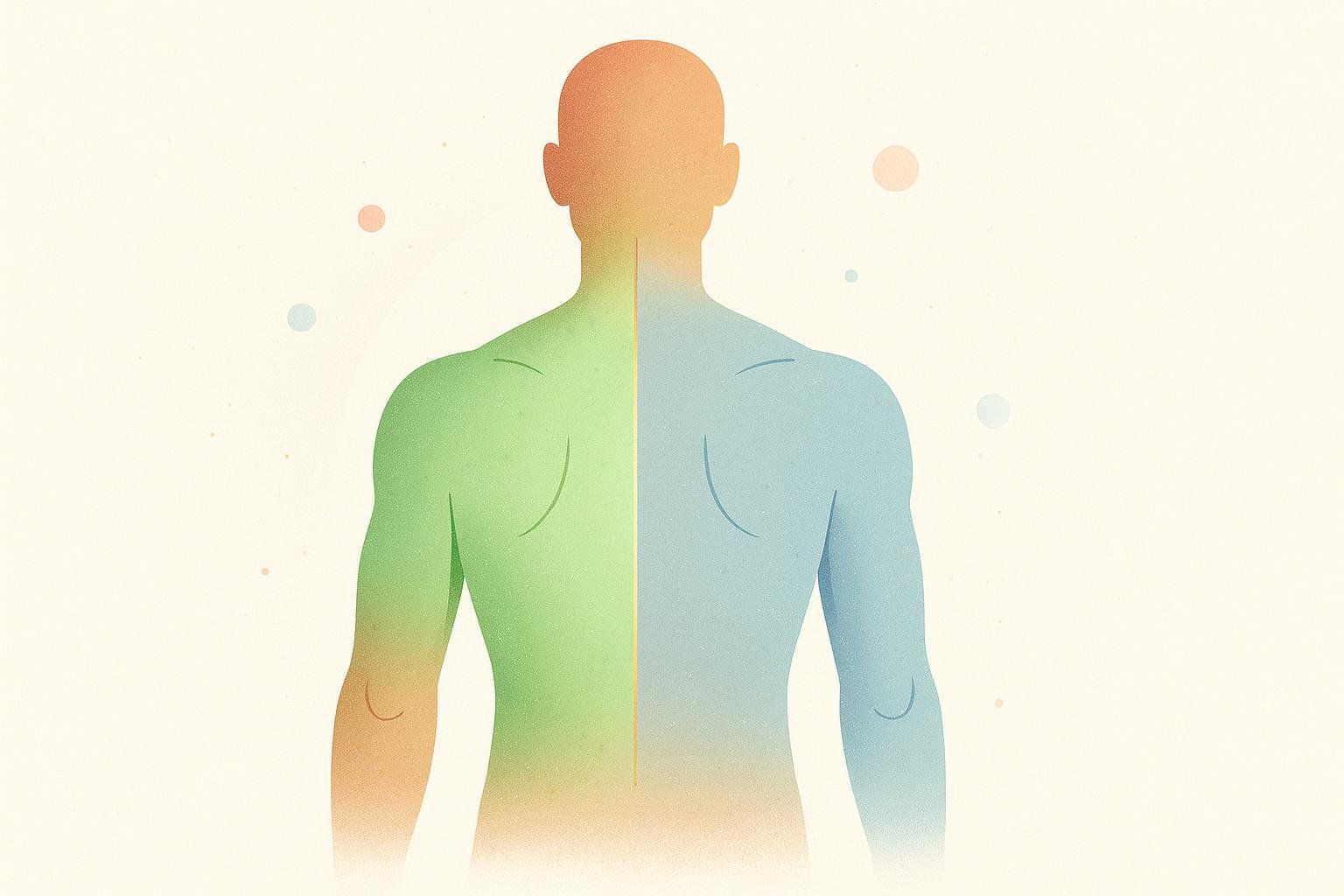
A DEXA scan provides precise measurements of lean muscle mass across your body. This data can reveal hidden imbalances that contribute to poor posture, such as:
- Left-to-Right Asymmetries: Significant differences between limbs can affect gait and pelvic alignment.
- Upper-to-Lower Body Imbalances: Identifying weaker regions like the core or glutes helps you target your training.
Track these numbers over time. You’ll see how focused training builds a more balanced, resilient frame. This turns guesswork into a data-driven plan for a healthier back and body.
Frequently Asked Questions
Q: How long does it take to correct my posture?
While there’s no set timeline, you may notice better postural awareness in as little as 2–4 weeks. Meaningful changes in muscle strength and comfort typically take 1–3 months of consistent practice.
Q: Can I fix years of bad posture?
Absolutely. Experts at Healthline note the body is remarkably adaptable. While deeply ingrained habits take time to unwind, a steady routine can deliver significant improvements at any age.
Q: Are posture-corrector braces helpful?
Experts at the Cleveland Clinic suggest braces can act as a short-term reminder to sit up. However, lasting change comes from strengthening your postural muscles, not relying on a brace, so use one sparingly as a training aid.
Stand Taller, Feel Better
Improving posture is one of the best investments you can make in long-term comfort and health. Start with a few of these exercises, stay consistent, and listen to your body.
Ready to see what your posture is built on? Book a DEXA scan today to get a precise picture of your muscle balance and begin your journey toward better alignment from the inside out.
